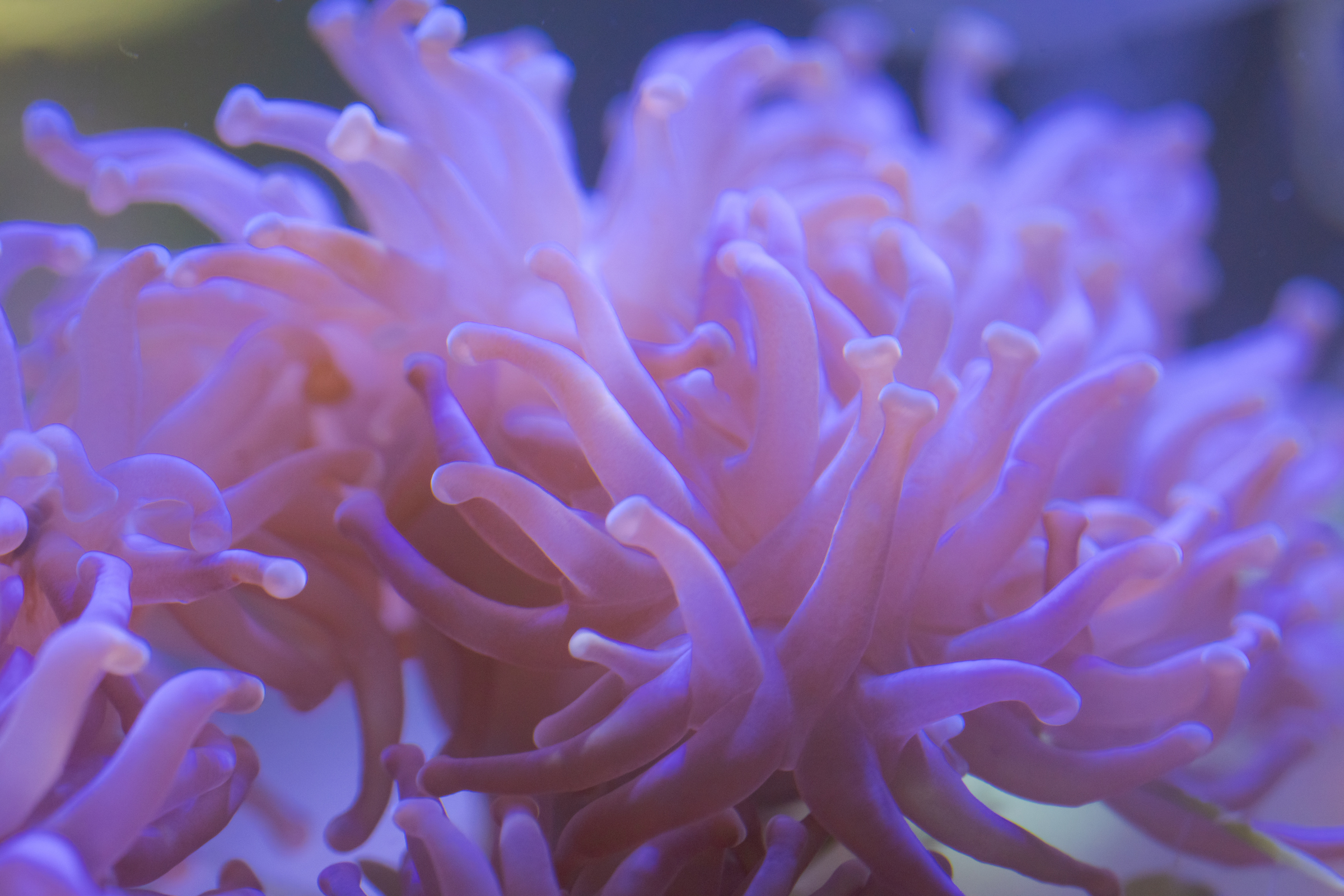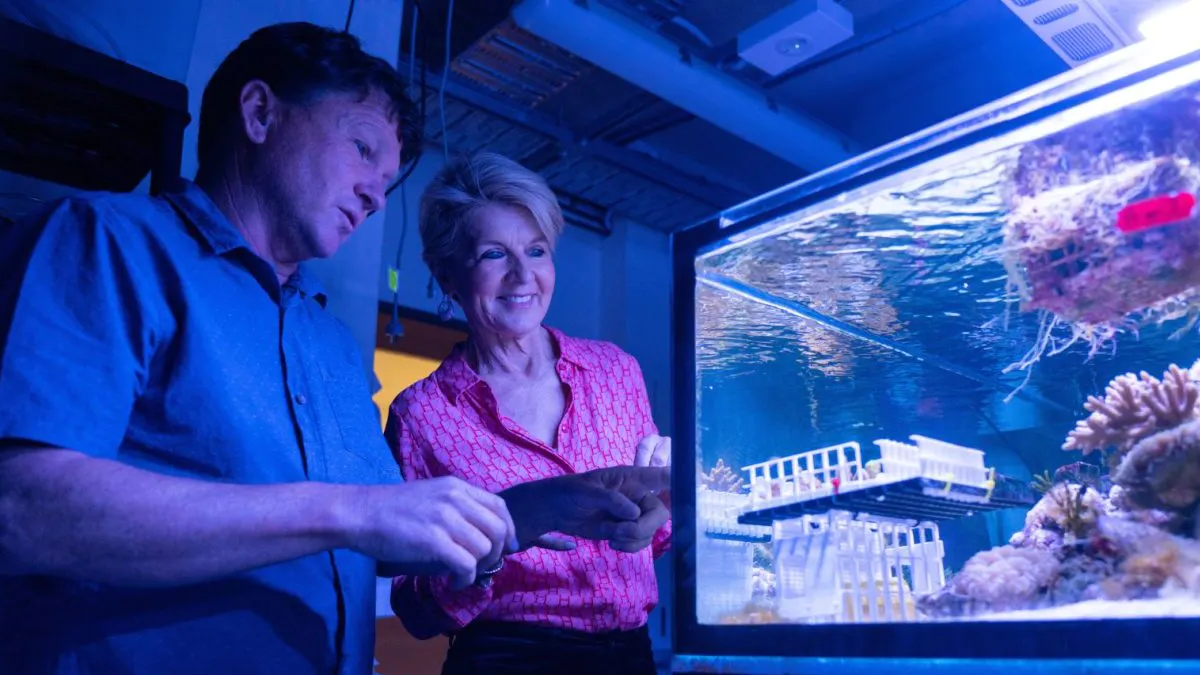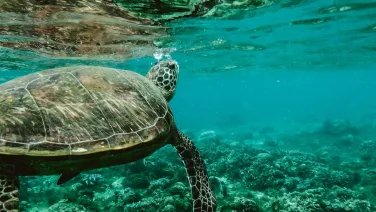
A coral reef in Canberra? It’s not as fishy as it sounds
By Amanda Diaz
Creating and maintaining an authentic reef on an inland, cold climate university campus is not a simple undertaking.
Canberra is about 150 kilometres from the coast and too far to bother calculating from anywhere tropical.
But nestled in a basement at the ANU Research School of Earth Sciences, lurid fish and coral are thriving.
“It’s its own little ecosystem,” chemist and oceanographer Professor Michael Ellwood says about the reef tank he tends.
Seawater is brought up from Batemans Bay every six months and the excess stored in a large tank outside the building. The coral was harvested from the Great Barrier Reef and flown from Cairns to Canberra.
“Getting the timing right took a bit of effort,” Ellwood says. “We had to get the courier lined up, so that the coral didn’t sit on a tarmac somewhere and cook.”
Not only did the coral arrive unscathed, it also came with some stowaways. Several herbivorous fish, starfish and snails have found a happy home in the tank. When ANU Chancellor the Hon Julie Bishop visited, she was thrilled that one of the reef fish had been named JBish in her honour.

The tank is being used by researchers from across the University, including Professor Stephen Eggins from the ANU College of Engineering, Computing and Cybernetics. The geochemist is studying coral calcification, the process that enables the organisms to grow and build their skeletons, as part of efforts to recreate past changes in ocean conditions.
Calcification is a healthy part of life under the sea, but the coral living in the tank has also experienced spots of bleaching, which occurs when stressed coral expels the algae living in its tissues, leaving it more susceptible to starvation and disease.
Ellwood isn’t sure why this change has occurred in a controlled environment — the tank’s temperature is kept at a balmy 25 degrees Celsius — but notes it echoes what’s happening on a greater scale in the Great Barrier Reef.
The world’s largest reef system has suffered several mass bleaching events in recent years.
Some of the research in this tropical tank may help give damaged coral reefs a brighter future. And it’s not just scientists working to do that.
PhD student Syamlal Sasi is developing an automated system to monitor and manage water quality in coral aquaculture environments, while honours student Beth O’Sullivan, from the ceramics studio at the ANU School of Art and Design, is researching the creation of marine objects that can be used for small-scale reef restoration.
“I am excited to have the opportunity to test the designs in Canberra’s own coral reef.”
This article was first published on ANU Reporter.



